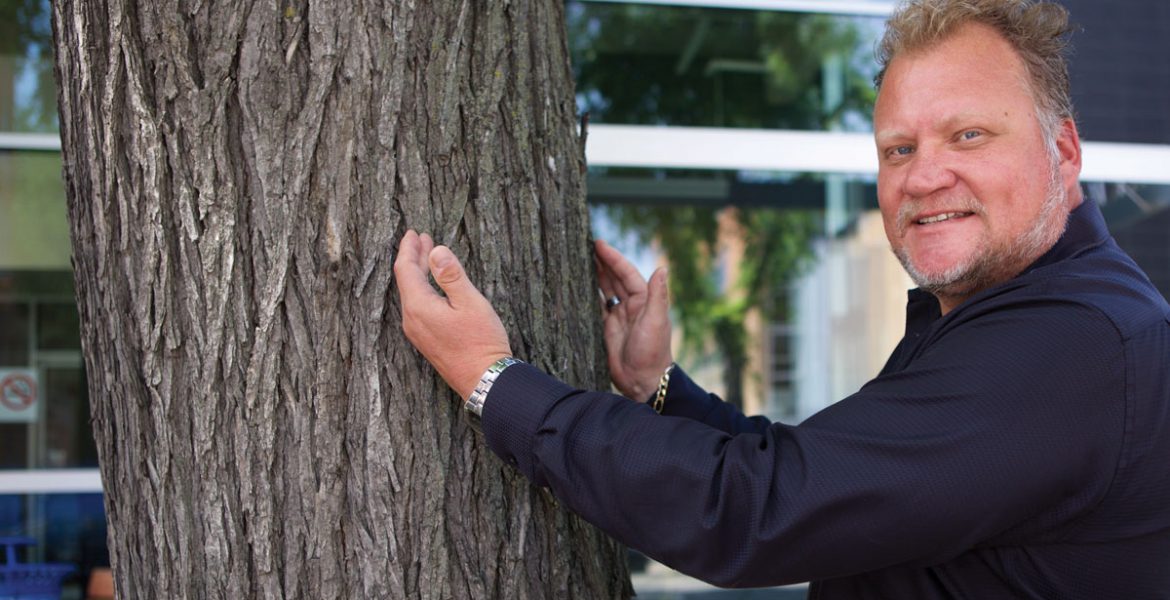A disease like amyotrophic lateral sclerosis (ALS) can be hard to understand, but a U of M researcher says it helps if you picture a tree.
If you strip the bark off a tree, it will die – right down to the root. The tree is lost forever, says Michael Namaka [B.Sc. Pharm/91, M.Sc. Pharm/97, PhD/00], a professor in the College of Pharmacy and a lifelong Manitoban.
A human nerve, he says, is like a tree. Its “white matter,” the nerve’s myelin coating, is the bark. If the white matter is gone, the root – the motor neuron – cannot survive.
Our bodies are made up of entire forests of these trees, but the number isn’t infinite. And unlike in a forest, no new trees spring up to replace the old. As each motor neuron dies, the patient experiences a permanent loss.
First movement is affected, with muscle weakness and then paralysis. Ultimately, the patient can’t breathe and dies of respiratory failure. The progression is quick. Most ALS patients survive two to five years after their diagnosis. “There aren’t many drugs on the market to treat ALS,” says Namaka, a neuroimmunologist. “And at best they have marginal benefit.”
To carry the tree metaphor a little further, Namaka is an expert when it comes to bark. But his background is in multiple sclerosis (MS) – another disease that involves white matter.
The difference is with MS, the white matter isn’t stripped away. Instead, it develops holes. Damage to the “tree” is slower and manifests differently. MS comes and goes, relapsing and remitting, affecting a patient throughout a much longer lifespan. The similarity between the two diseases, and possibility the key to a cure, is in the white matter.
“In ALS, we believe that if you can block the white-matter damage that may be occurring prior to the motor-neuron death, we may be able to extend the life of these motor neurons to keep people healthy,” says Namaka. “At that point you’re not just managing a disease, you are stopping the thing that causes the decay in the first place.”
Namaka is excited to be involved with research that may be at the forefront of a cure. But he’s equally encouraged to be part of an interprofessional team at the university, a situation that’s happening more and more. He points out that the lead on the ALS project is from the university’s department of human anatomy and cell science, Dr. Jiming Kong. With a $1.7 million grant from the ALS Society, Kong’s intention was to build a team with the right expertise, no matter which unit is the researcher’s home base.
“All of us need to get out of our silos,” says Namaka. “So far, there haven’t been great strides in a cure for ALS. But if we take my expertise in white matter and pain, which I gained through my work around MS, we can apply that to ALS. By partnering with Dr. Kong, we have an opportunity to open even more doors.”

